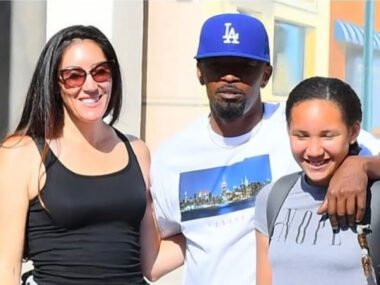You might be surprised to learn how many accomplished individuals have shared the name John Harmon throughout American history. From Hollywood’s golden era to today’s jazz stages, and from military battlefields to modern boardrooms, this name has appeared alongside some truly remarkable achievements.
What’s fascinating is how these different John Harmons have each carved out their own unique legacy. Whether we’re talking about a character actor who appeared in nearly 300 films, a jazz innovator who revolutionized contemporary music, or a business leader championing economic equality, each has made their mark in distinctly different ways.
Their stories offer a window into American culture and professional life spanning nearly a century. Let’s explore how these individuals turned their talents into lasting contributions that continue to influence their respective fields today.
John Harmon – The Prolific Character Actor (1905-1985)
Early Life and Career Beginnings
Picture this: a young man from Ritzville, Washington, arriving in Hollywood during the 1930s with dreams of making it in pictures. That was John Harmon, born June 30, 1905, who would go on to become one of the most familiar faces in American entertainment, even if you might not have known his name.
Like countless other hopefuls, Harmon started at the bottom. He took whatever roles he could get, many so small they didn’t even earn him a credit. But here’s what set him apart – he never gave up. When “I Was Framed” gave him his first major screen credit in 1942, it marked the start of something extraordinary.
What happened next was pretty remarkable. While other actors came and went, Harmon just kept working, building a reputation as someone directors could count on to deliver exactly what they needed.
Six Decades of Screen Presence
Here’s a number that’ll blow your mind: nearly 300 roles across six decades. That’s not just longevity – that’s practically unheard of in Hollywood. John Harmon didn’t just survive the transition from the studio system to television; he thrived in it.
You know those character actors who pop up everywhere? The ones where you think, “Hey, I’ve seen that guy before!” That was Harmon. He had this incredible ability to blend into whatever role he was playing. Crime drama? He was your guy. Western? Perfect. Science fiction? No problem.
What’s really impressive is how he adapted to changing times. The entertainment industry went through massive changes during his career, but Harmon rolled with every punch. Directors loved working with him because he was reliable, professional, and could make even the smallest role memorable.
Memorable Television and Film Contributions
If you’re a Star Trek fan, you’ve definitely seen John Harmon’s work. He appeared in two classic episodes: “The City on the Edge of Forever” and “A Piece of The Action.” These roles introduced him to a whole new generation of science fiction enthusiasts who still appreciate his performances today.
Western fans knew him well too. Whether he was playing a hotel clerk in “Gunsmoke” or appearing in “Bonanza” and “The Rifleman,” Harmon brought authenticity to every role. His work in “Perry Mason” as a police expert showed his range – he could be authoritative when the script called for it.
His film career included everything from “Gallant Bess” to “Funny Girl.” But here’s something amazing: his final screen appearance came in “The Naked Monster,” released in 2005 – twenty years after he passed away. Talk about a lasting legacy!
John Harmon – Wisconsin’s Jazz Composer and Educator (Born 1935)
Musical Foundations and Education
Now let’s shift gears completely and talk about a different John Harmon – this one born in Oshkosh, Wisconsin, in 1935. His story starts with his mother, who played piano by ear and passed along her love of music to her son. Sometimes the best education happens at home, and that was certainly true here.
When seventeen-year-old Harmon auditioned for Lawrence University, he faced a problem: he couldn’t read music. But the faculty heard something special in his playing. His ear for music was so good that they admitted him anyway, though he had to spend the summer learning to read notation. Talk about potential!
Then came an unexpected twist. When Harmon was drafted into the Army in 1958, he ended up in the Army band. Instead of being a setback, this turned into an incredible opportunity. He was stationed in the Fifth Army area, which covered major jazz centers like Chicago and Detroit. Suddenly, he was playing with some seriously talented musicians.
The Matrix Era and Jazz Innovation
After studying with the legendary Oscar Peterson and spending time in New York’s jazz scene, Harmon returned to Wisconsin with big plans. In 1973, he put together something special: a nine-piece group called Matrix that would change how people thought about jazz.
Matrix wasn’t your typical jazz ensemble. With six horns and an unusual setup, they created sounds nobody had heard before. Harmon used voices not as lead vocals, but as background color – almost like another instrument. The result was something critics called “classical fusion jazz,” though Harmon himself just thought of it as good music.
Their big break came from pure chance. A booking agent was driving to meet someone when he heard their demo on the radio. He was so impressed that he canceled his appointment, turned around, and went straight back to his office to call his boss in New York. That’s how Matrix ended up at the Monterey Jazz Festival, where they became an overnight sensation.
The Monterey performance was something else. Critics were shoving microphones in their faces, asking where they’d been hiding. Musicians in the audience were blown away. Matrix had arrived, and they’d done it by creating something completely original.
Academic Career and Continuing Legacy
When Harmon returned to Lawrence University as their first director of jazz studies (1971-74), he brought real-world experience to the classroom. His approach mixed serious composition training with hands-on jazz performance, and students responded enthusiastically.
His compositional work is impressive by any measure. Seven symphonies, though only two have been recorded so far. Major orchestras like the Milwaukee Symphony have commissioned his work. Artists ranging from jazz trumpeter Bobby Shew to Brazilian singer Flora Purim have performed his compositions.
The recognition keeps coming. He’s received the Wisconsin Music Educators Association’s Distinguished Service Award, an honorary doctorate from Lawrence University, and fellowship in the Wisconsin Academy of Science, Arts and Letters. Since 1991, he’s been composer-in-residence for Montana’s Red Lodge Music Festival – a role he still holds today.
John E. Harmon Sr. – Business Leadership and Community Impact
Educational Background and Early Career
Let’s talk about another John Harmon making waves, this time in the business world. John E. Harmon Sr. built his career foundation through education and early leadership experience that would serve him well in later endeavors.
At Fairleigh Dickinson University, where he earned his Business Management degree in 1983, Harmon wasn’t just another student. He served as president of the Black Student Union and worked as a resident assistant. These weren’t just resume builders – they were real preparation for the leadership challenges he’d face later.
His path to FDU started at community college, which gave him perspective on the challenges facing students from different backgrounds. This experience would prove valuable when he later worked to create opportunities for others facing similar obstacles.
African American Chamber of Commerce Leadership
Since 2007, John E. Harmon Sr. has led the African American Chamber of Commerce of New Jersey (AACCNJ) as its founder, president, and CEO. Under his guidance, this organization has become a real force for economic development and business advocacy.
What makes Harmon’s approach effective is his focus on practical results. The AACCNJ doesn’t just talk about economic equity – it creates concrete pathways for minority-owned businesses to grow and succeed. They provide networking opportunities, advocacy support, and real resources that make a difference.
His leadership style emphasizes collaboration over confrontation. Rather than just pointing out problems, Harmon works to build solutions that benefit everyone. This approach has made the AACCNJ a model that other organizations study and emulate.
His IOM (Institute for Organization Management) credential reflects his commitment to professional excellence in association management. It’s not just a title – it represents specialized training in the skills needed to run effective business organizations.
Other Notable John Harmons
Professional Achievements Across Fields
The John Harmon name appears in other impressive contexts too. Dr. John S. Harmon has made his mark as a patent attorney and shareholder at Wolf Greenfield, one of the top intellectual property law firms in the country. His expertise in mechanical arts and materials science, particularly regarding artificial intelligence’s impact on IP law, puts him at the forefront of legal innovation.
Military service has also been part of the John Harmon story throughout American history. Sergeant John Harmon earned the Silver Star during World War I while serving with the 38th Infantry Regiment. Other John Harmons have served with distinction in conflicts from World War II through modern military operations.
These diverse achievements show how the John Harmon name has been associated with excellence across multiple fields. Whether in law, military service, or other professional areas, these individuals have brought dedication and skill to their chosen paths.
The Legacy of the John Harmon Name
Common Threads of Excellence
What’s striking about these different John Harmons is how much they have in common, despite working in completely different fields. Each one showed incredible dedication to their craft – not just for a few years, but for decades. They weren’t looking for quick success; they were building lasting careers.
Innovation runs through all their stories too. The actor adapted to massive changes in entertainment over six decades. The musician created entirely new approaches to jazz composition. The business leader developed fresh strategies for economic development and community building.
Perhaps most importantly, each of these John Harmons contributed beyond their own success. They entertained audiences, educated students, supported other businesses, and served their communities. Their achievements weren’t just personal – they lifted others up along the way.
Conclusion
These John Harmon stories remind us that success comes in many forms and can emerge from anywhere. A small-town Washington kid became a Hollywood fixture. A Wisconsin musician revolutionized jazz. A New Jersey business leader champions economic equality. Each found their own path to making a meaningful difference.
What connects them isn’t just their name, but their approach to their work. They showed up consistently, adapted to change, and never stopped learning. They built careers that lasted and created legacies that continue to influence others.
Whether you encounter their work through classic TV reruns, jazz recordings, thriving business communities, or professional innovations, the John Harmon name represents quality, dedication, and service. These individuals prove that with talent, persistence, and commitment to others, anyone can create lasting positive impact in their chosen field.










